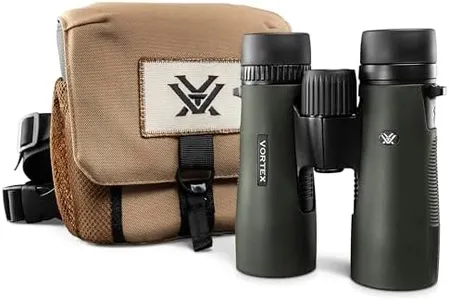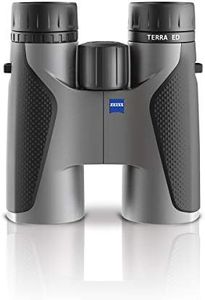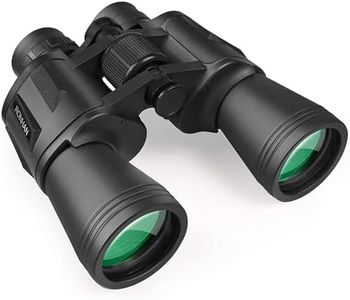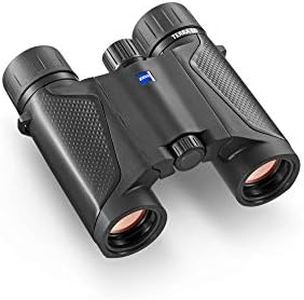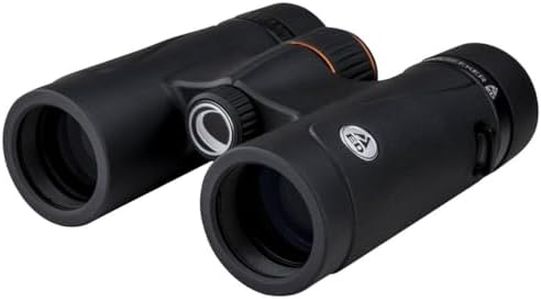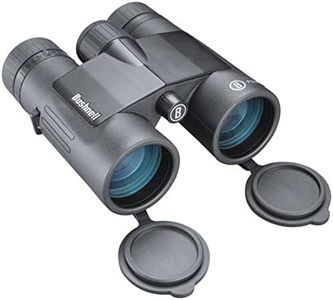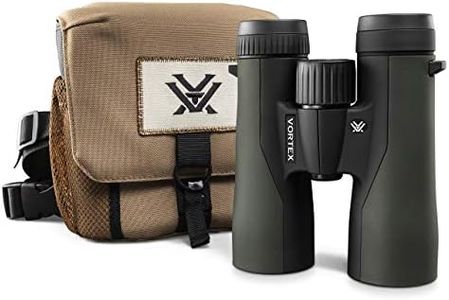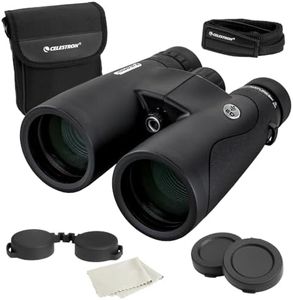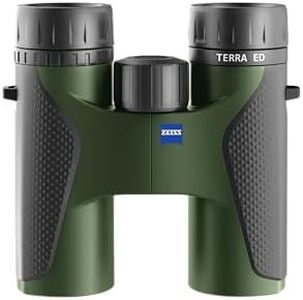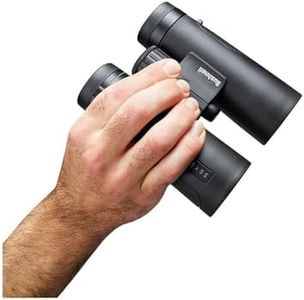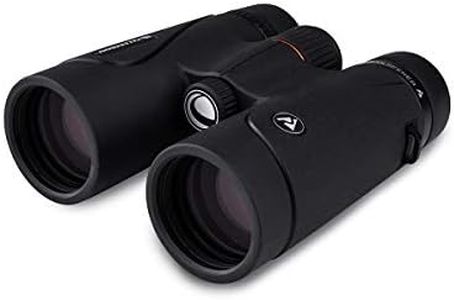We Use CookiesWe use cookies to enhance the security, performance,
functionality and for analytical and promotional activities. By continuing to browse this site you
are agreeing to our privacy policy
10 Best Bird Watching Binoculars
From leading brands and best sellers available on the web.Buying Guide for the Best Bird Watching Binoculars
When it comes to choosing binoculars for bird watching, the right pair can make your experience much more enjoyable and rewarding. A good fit means you'll be able to spot birds clearly, comfortably, and with little eye strain, even during long sessions. The perfect binoculars for you will depend greatly on where, how, and when you plan to use them, as well as your own preferences for size and ease of use. It's important to understand the main features, so you can decide which ones match your bird-watching needs.MagnificationMagnification tells you how many times closer the binoculars make objects appear compared to the naked eye. For example, in a binocular labeled 8x42, the 8 means the view is eight times closer. Higher magnification lets you see distant birds in more detail, but it can make the image shakier and narrows your field of view. Most bird watchers find magnifications between 7x and 10x ideal. If you'll mostly be observing birds that aren’t very far away or want a brighter, steadier view, go with lower magnification. Choose higher magnification if you often spot birds at a distance and are able to hold binoculars steady.
Objective Lens DiameterThe objective lens diameter is the size of the front lenses on the binoculars, usually given in millimeters. This affects how much light the binoculars can gather — bigger lenses give you a brighter image, especially in low light conditions like dawn or dusk. In 8x42 binoculars, the 42 stands for a 42mm objective lens. Lenses between 32mm and 42mm are a sweet spot for bird watchers, balancing brightness with portability. Go for larger lenses if you often bird watch in dim conditions, but lighter, smaller lenses are easier to carry if you’re active or want a compact option.
Field of ViewField of view is how wide an area you can see through the binoculars at a certain distance, usually measured in feet at 1,000 yards or in degrees. A wider field of view lets you spot birds more easily as they move, making it great for tracking flocks or fast flyers. Narrower fields might give you a more detailed look, but make it harder to locate and follow birds. If you like watching birds in open spaces or need to track quick movements, a wider field of view is better. If you mostly observe perched birds or want greater detail, a narrower one may suffice.
Weight and SizeThe overall weight and size of binoculars affects how comfortable they are to carry and hold for long periods. Heavier, bulkier models might offer brighter, sharper images but can cause fatigue if you’re out for hours. Lightweight and compact binoculars are easier for travel or long hikes but may sacrifice some performance, especially in low light. Consider how long you’ll be holding binoculars at a time and whether you need to travel light—choose something that fits comfortably in your hands and can be used for extended sessions without strain.
Close Focus DistanceClose focus distance tells you how near an object can be while remaining sharply in focus, usually measured in feet or meters. If you enjoy observing birds or other wildlife up close, like hummingbirds or butterflies, a shorter close focus distance is best. Most general bird watchers are fine with a close focus of under 8 feet, but if you love watching birds at feeders or small garden birds nearby, look for models with an even shorter close focus.
Eye ReliefEye relief is the distance your eye can be from the eyepiece while still seeing the full image, important especially if you wear glasses. Longer eye relief (usually 15mm or more) means glasses wearers can use binoculars comfortably without losing part of the view. If you don't wear glasses, eye relief is less critical. If you do, check that the model provides enough eye relief to accommodate your glasses.
Water and Fog ResistanceWaterproof and fog-resistant binoculars are built to withstand moisture, rain, and quick changes in temperature. This feature is a must if you often bird watch in wet, humid, or unpredictable weather, or in places where condensation might be a problem. Look for descriptions like 'waterproof' or 'nitrogen-purged' to ensure your binoculars will keep performing whatever the weather.
